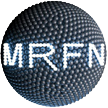The PlasmaTherm Model 790 RIE-PECVD system has a computer-controlled single-wafer turbopumped chamber that provides reactive ion etching (RIE) and plasma-enhanced chemical vapor deposition (PECVD) capabilities. RIE is accomplished using fluorine-chemistry gases (CF4, CBrF3, CHF3, etc.) with up to 500 W RF power. PECVD capability provides low-temperature (up to 350 oC) SiO2 and Si3N4 deposition from silane chemistry.



